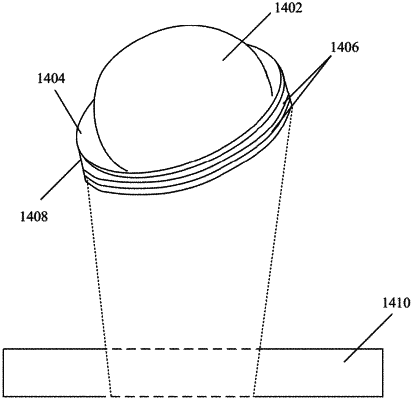| CPC H01Q 19/062 (2013.01) [G02B 27/0955 (2013.01); H01Q 15/02 (2013.01); H01Q 21/0006 (2013.01)] | 13 Claims |

|
1. A communication device, comprising:
a system board comprising a plurality of chips, each chip in the plurality of chips includes a plurality of antennas; and
a system cover coupled to the system board, the system cover comprises:
a plurality of lenses, wherein each lens is configured to cover an antenna of the plurality of antennas as a radome enclosure, wherein each lens comprises:
a base;
a first tubular membrane coupled to the base;
a second membrane coupled to the first tubular membrane, wherein first tubular membrane and the second membrane, in conjunction, cause the lens to have a bell shape; and
a support structure coupled to the first tubular membrane, wherein the support structure facilitates coupling of the plurality of lenses to the system cover,
wherein each chip comprises a feeder array that further comprises a plurality of antenna elements that are positioned at a proximal distance from the base of a lens of the plurality of lenses, the lens receives radio frequency (RF) signals,
wherein a distribution of a gain of input RF signals is substantially equalized across the plurality of antenna elements based on at least the proximal distance of the feeder array to the base of the lens,
wherein the proximal distance of the base of the lens is adjustable based on the support structure, and
wherein the system cover further comprises a height adjuster to control the proximal distance between the base of the lens and the system board.
|